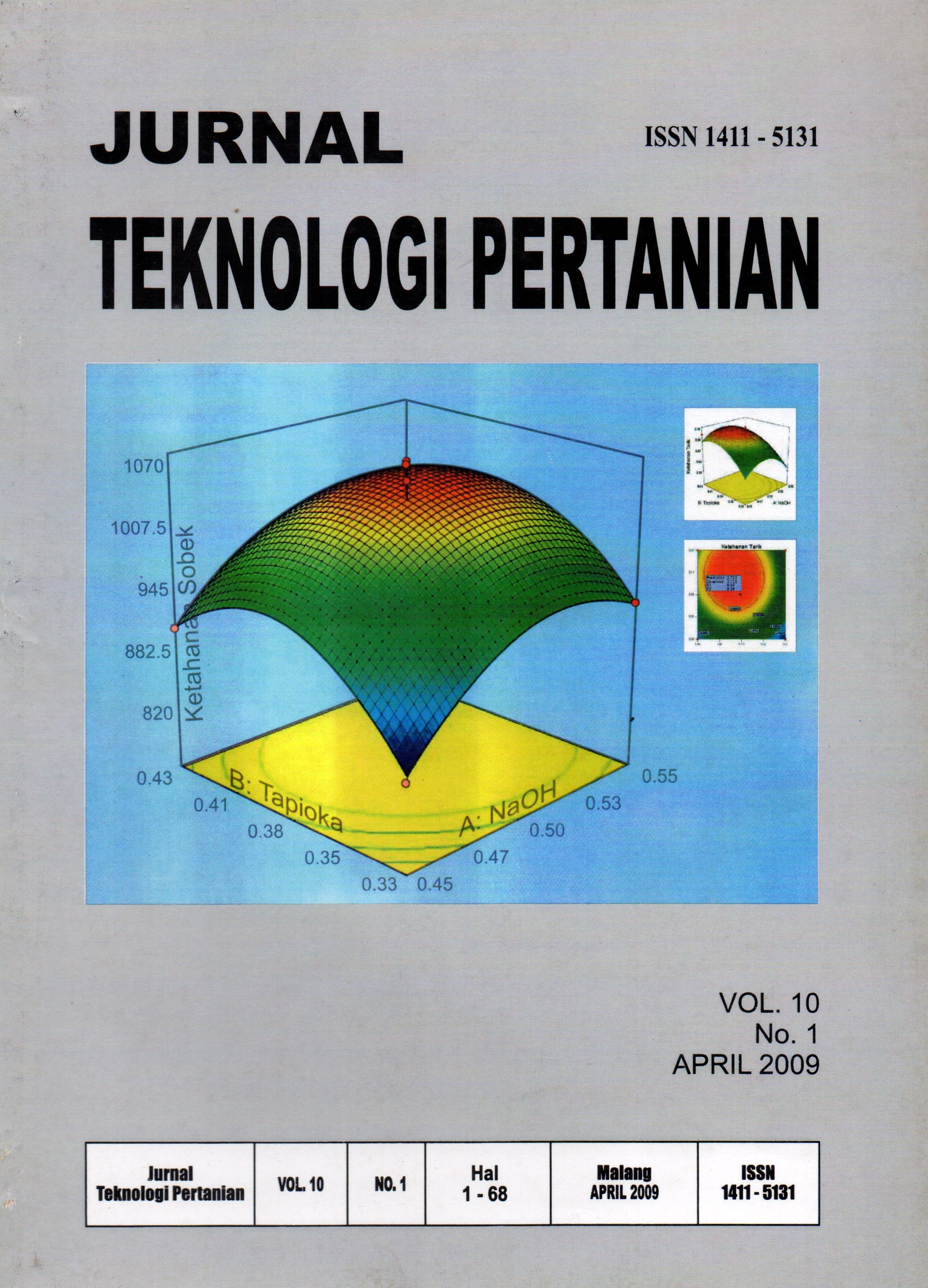Detoxification of Gadung Tuber (Dioscorea Hispida denst) by Heating and Acidification in Flour Processing
Abstract
Gadung (Dioscorea hispida dennst) is a starchy tuber that contains poisoneous compounds, which is cyanide compound.  Therefore its diversification products are limited.  Only crispy fried chip of gadung product is found in the market.  Proper processing should be developed to eliminate the poisoneous compounds and to produce gadung flour which has many applications.  The aim of this research was to find out an optimum pH and duration of heating to eliminate poisoneous compounds in fresh gadung in flour making process.  It was suggested that heating and ph adjustment could activate endogenous enzymes that responsible for hydrolysis of cyanide compounds into free cyanide.  This research used Randomized Block Design with 2 factors.  The first factor was pH (4; 4.5; and 5), and the second factors was incubation time at 450C for 1, 3, and 5 hours.The result showed that incubation time and pH gave significant effect (α = 0.05) on gadung flour.  Incubation time gave significant effect on moisture content, cyanide content, flour yield, sugar total content, hygroscopicity, and ash content.  Meanwhile, pH value gave significant effect on cyanide and fiber content.  Interaction of the two treatments gave significant differences effect on cyanide content.  The best treatment based on physico-chemical parameter of gadung flour was 5 hours of incubation and pH 5.  It had flour characteristics as follows: 11.26% of moisture content; 19.95 ppm of  cyanide content; 67.2% of starch content; 5.35% of sugar total content; 1.85% of fiber content; 3.66% of ash content; 2.59% of hygroscopicity; 9.9% of yield, and 74.91% of brightness value
Keywords: yams flour, cyanide acid, endogenous enzyme
Downloads
Published
Issue
Section
License
Authors who publish with this journal agree to the following terms:- Authors retain copyright and grant the journal right of first publication with the work simultaneously licensed under a Creative Commons Attribution License that allows others to share the work with an acknowledgement of the work's authorship and initial publication in this journal
- Authors are able to enter into separate, additional contractual arrangements for the non-exclusive distribution of the journal's published version of the work (e.g., post it to an institutional repository or publish it in a book), with an acknowledgement of its initial publication in this journal
























